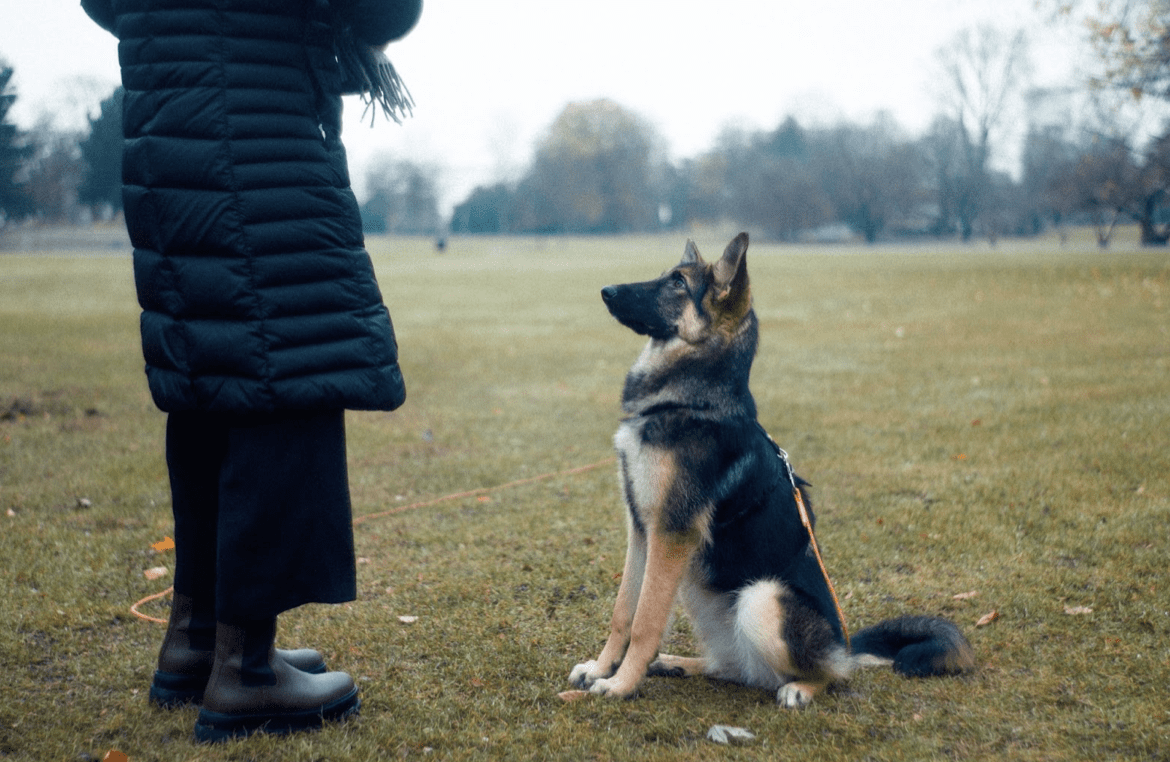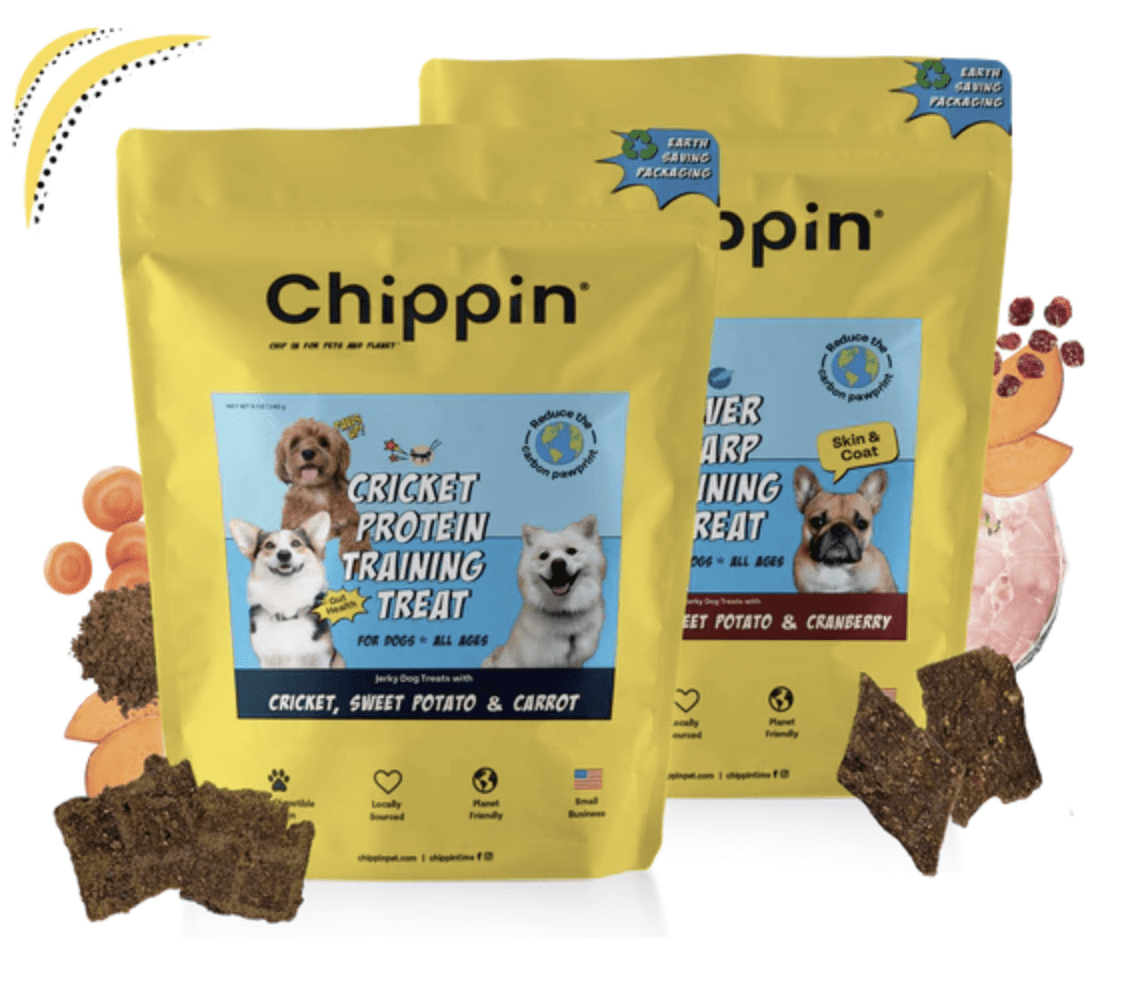Last Updated on July 25, 2022 by Dogs Vets
How to Train Your Dog with Chippin Dog Treats
Dogs love food on a par with humans, perhaps even more so.
So, when it comes time to train your dog to do something, there is no more powerful motivator than something to eat. But while a command may seem easy to you, your dog may not comprehend exactly what it is that you want.
By using a resource necessary to their survival, which is instinctive, you’ll have a better chance of educating your dog to complete desired actions.
They will identify the action with the positive reinforcement of a treat. Follow these tips when using a favorite treat to train your dog.

1. Treats Should be Small
If you give large treats, you’ll be contributing to potential weight problems in the future and with all the associated problems that accompany obesity.
If your dog eats too many large treats, he or she may decide that they are full and don’t want anymore. Keep treats tiny, eventually breaking up larger ones into several smaller pieces.
2. Keep Treats Hidden
Treats should be hidden and given only after a dog has successfully completed a command. If you need to show the treat ahead of the command, it’s a bribe.
3. Never Bribe Your Dog
If you begin by bribing, it may never end, and your dog will only obey commands when you have a treat in hand. Treats should be used after your dog has completed a command as a reward.
A treat can be used initially to get your canine BFF’s attention and enable Pooch to learn. Gradually replace treats with a favorite toy, praise of signs of affection.
4. Prevent or Remove Distractions
Where you decide to train is important. Dogs, especially young ones, have short attention spans, so if your training environment is filled with noises or activity, don’t expect your pup to concentrate on you. Your dog should already have learned a command before attempting to use it in a busy location.
5. Hold Treats in a Closed Hand
When working on the initial basic commands like sit, lay, or come, you will need to let your dog know that you have a treat as an incentive. Holding the treat in a closed fist will allow your dog to smell it but not eat it.
Once your dog has identified the presence of a treat, Pooch will be inclined to follow your fist. This will help in convincing your dog to follow at your side, sit, or lay down from a sitting or standing position as you lower your hand. Once they assume the correct position, reward your dog with a treat.
6. Use verbal praise alongside treats during training
Combine verbal praise with treats when rewarding your pup. Dogs love verbal praise almost as much as they love food, so use both a treat and praise together. This will stimulate your dog to repeat the desired behavior. It also will facilitate substituting treats with praise further along.
7. Use Clicker Training
Once your dog has successfully learned a command, and your dog performs it easily, use a clicker while rewarding with a treat.
The dog will begin to associate the clicking sound with a reward. As the dog memorizes this association, you can gradually begin to phase out giving treats but continue reinforcing the behavior with the clicking sound.
8. Reward Only for the Correct Behavior
Never reward hyperactive or excited behavior. Young dogs may begin jumping up after having completed a command.
You need to reward your dog promptly after the desired behavior is performed, otherwise, wait until your dog is in a calm state and repeat the command. You don’t want to confuse your dog by rewarding excitement or improper actions.
9. Gradually Substitute Treats with Alternatives
If your dog loves praise, a cuddle, petting, or has a favorite toy such as a ball, begin to substitute the rewarding of a treat with the rewarding of a favorite activity like receiving praise, playing tug-of-war, or fetching the pup’s favorite ball. This will continue to reinforce the desired behavior, but you’ll be offering fewer calories with an eye on keeping your dog fit and at a healthy weight.
10. Find the Correct Treat
Not all dogs like the same flavors or treats for that matter. Your dog’s taste will influence how successful training is. If the treat you are offering is not sufficiently tasty, your dog may not be particularly motivated to perform the desired behavior.
If you suspect this may be the case, try out different textured and flavor treats until you find the one that your Pooch can’t live without.

Italian-based dog trainer, Elizabeth Smith, commented, “I have 6 dogs, 5 of which love little hotdogs cut into small pieces for training sessions. My pack leader could care less when offered pieces of hotdog, opting to drop them or not accept them at all. He prefers high-quality packaged treats like Chippin Jerky, and at over 120 lbs, who wants to argue?”
Are Store-Bought Treats or Home-Made Treats Better?
Home-made dog treats generally will not contain preservatives or chemicals necessary for prolonged shelf life. However, they may also not contain the same amount of nutrients and vitamins that dog treats created by veterinary nutritionists do.
You may also not know how many calories your treats contain, so if your dog tends to gain weight or is overweight, calorie counting becomes a priority.
An equally important problem is created by potential allergens in food. Chippin’s high-quality dog food and packaged treats offer various diet options for canines with intolerances or specific health issues.
Many use protein from ecologically sustainable sources, so you get quality and nutrition together with production best practices. And your dog will love them as well!

















